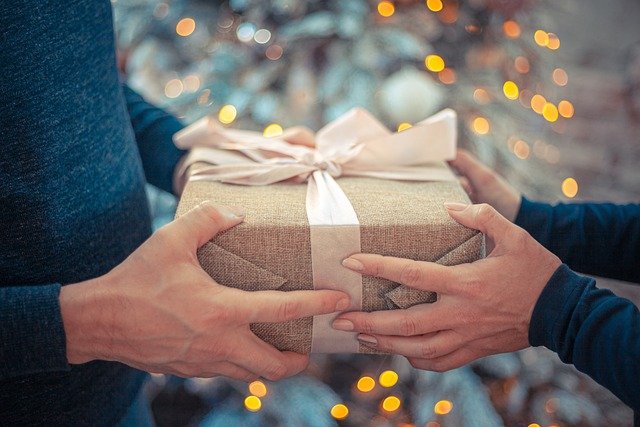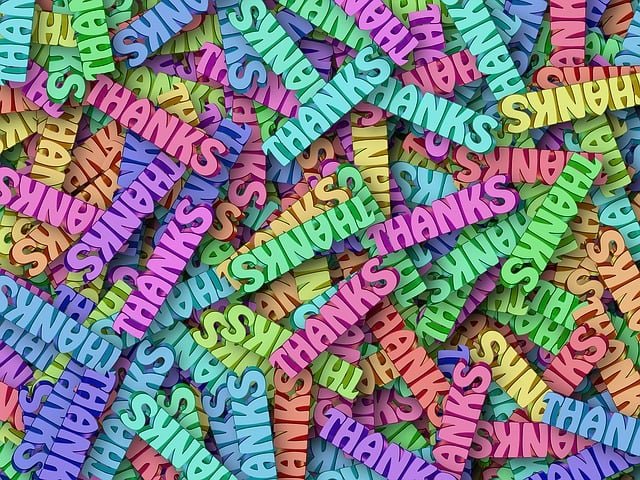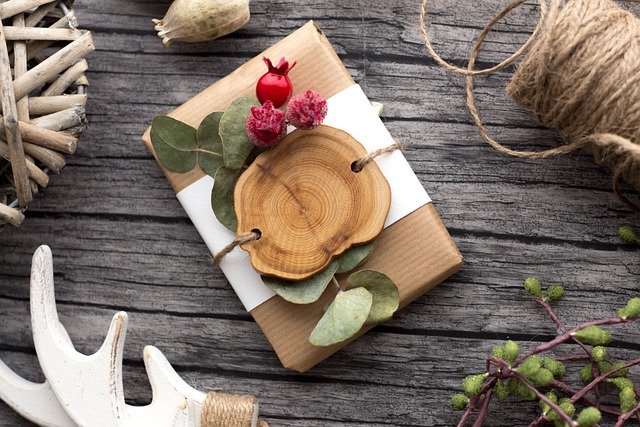Introduction to the Importance of Gratitude
Thankfulness is a very human form of social interaction and communication that plays a huge part in our social bonding function. Receiving a gift — be it an appreciation, be a surprise act, be a gifting — demands a gratitude in return. Thanking is not just a commentary to be polite; it is an act to cement the good deed and build a more lasting relationship between the person who gives and who receives.
There are many positive emotions associated with thankfulness. It can make a person feel better about themselves, a sense of happiness and contentment. Studies suggest that being grateful reduces anxiety and depression while making you feel more optimistic and robust as an individual. If we make it a habit to notice the little kind gestures of other people, we are likely to become more optimistic in life. Especially when you get an unanticipated gift, it can make you feel surprised and happy and which is the positive side of it.
Experience E41: The Social Importance of Gratitude While this conversation focused on the individual benefits of gratitude, it also has social significance. This allows us to find a community where kindness and generosity are celebrated. When we recognize what others do for us, we create a giving culture, where acts of kindness are returned and valued. Also, thanking someone the proper way will improve your relationships. This will make him feel better and he will feel nice to see you next time. This cycle of gratitude strengthens connections and inspires acts of kindness and compassion.
Given all this, it becomes clear that giving thanks is more than just a nicety, it is an important practice that enhances our emotional existence and solidifies our social networks. The act of gratitude prepares us to present thanks when we are given an unexpected gift. In such cases, this blog post will explore how to express genuine appreciation.
A New Take on Understanding Contextual Gifts

Surprise gifts are best described as presents or thoughtful gestures that take the giftee by surprise, are sudden in nature, and couldn’t have been planned for. While some of these gifts take place in celebratory moments and during achievements, they also surprise you in moments of personal challenges where you least expect a kind gesture. For example, you get promoted at work, and your colleague gives you a book on people development, or a friend surprises you with something they made to help you after hearing about your struggles. Perhaps this is where the real beauty of gifts that come from the heart lies: they say what words cannot.
Perhaps lots of feelings come up when you receive a gift you didn’t expect. First comes the shock of the surprise. After this the giver is often met with gratitude which strengthens the emotion between the giver and receiver. That gratitude may also be tainted with a sense of confusion or guilt if the recipient feels that they did not return the same level of thoughtfulness. These feelings are important to understand, as they heavily influence the way in which someone decides to show gratitude.
And a recipient’s emotions can also be influenced by the gift itself. Receiving a gift that reflects your interests or needs as a person can be a shock, but it can also serve to make you feel seen and understood by the giver. Conversely, a gift that feels remiss or misread can incite ambivalence, presenting a moment of inner dialogue on how best to respond to such a gift. Indeed, this complexity of emotion and situation drives how one should thank someone for an unexpected gift so that the reply is meaningful and appropriate.
Immediate Responses: How to Respond in the Moment

An unexpected gift can stir up quite a mix of emotions, and responding in the moment — appropriately and with authenticity — is essential to expressing your gratitude. Body language — Firstly, body language is an integral part of gratitude. Read on for a few tips about body language: A warm smile and making eye contact, with sufficient space between your legs and arms, is about the most effective approach to convey joy and sincerity. The non-verbal presence pretty much helps to not only acknowledge to the gift giver that it was a thoughtful process but also helps to keep the exchanging atmosphere very close and positive.
When verbally saying thank you, be clear and direct. Make it really easy: “Thanks so much, this is such a thoughtful thing to do! ” is the one who can express your gratitude in the best possible way. When you are actually excited, genuinely excited, that is when you need to show excitement. Be energetic. This establishes an instant rapport not only paying tribute but also making the moment more powerful. A short line about what you like about the gift (if you have time) adds more color to your response. For example, explaining how the gift relates to your interests or needs is one way to go beyond the expression of gratitude.
Not using words – make sure you also pay attention to your body language or any hints that the partner could do to express their gratitude. A head nod, a touch on the arm, even an excited response can increase the interaction. Even a little bit of time to grab the gift and inspect it will show your interest and delight. This simple gesture indicates that you appreciate the thought behind the gift, which further conveys the sense of gratitude in the moment.
In short, the unexpectedness of its gift, of body language, of verbal expressions of gratitude and non-verbal expressions of this bond have the effect of a thousand words of appreciation. The benefit with such a method is that it pays respect to the giver and also tends to open up the conversation more, receiving a warm and thankful discussion.
Writing an Appropriate Thank You Note

Learning how to write a thank you note for an unexpected gift is an important thing to do, because it helps to practice an important life skill in that it helps to express appreciation which in turn helps in building good relationships. The best thank you notes are the ones that sound like yourself and that sound like you are truly grateful to the giver. Use a proper name or a friendly salutation to address the recipient in the beginning. This helps to create a positive vibe from the get-go, and it makes it a bit more personal.
Then, state your appreciation for the gift in a clear manner. Instead of a standard “thanks,” it should be clear what the gift was and how it affected you. Example: If you got a book for someone with a good artisanal printing, you could say, “Thanks for the beautiful novel. I started reading it already, and it is mesmerizing. Not only this but it also shows you have pulled your act together and are actually considering the gift.
Moreover, it is essential to focus on the intent of the giver. Realize you put the time and effort into finding something you thought I might like. A comment such as, “It means a lot to me that you thought of me and your choice was a very useful gift,” reminds them of your relationship and appreciation for their consideration.
The style of your note should reflect your relationship to the giver. If they are a more intimate friend, a casual tone is probably called for. For a more formal relationship with someone — a coworker or an acquaintance, say, or a distant relative — be polite but non-committal. Finishing with a phrase reminding them how grateful you are, for example, “Thank you so much for your kindness,” will stick with them.
Lastly, adapt the message even more with a quick reference to the next time you’ll be meeting or even to how you intend to use the gift. A typical response: bring on the coffee and let’s talk about this book soon. This adds to the emotion behind it, and expresses that you want to continue the relationship. Writing a short thank you note is a great way to thank someone for those unexpected gifts of kindness.
Finding Other Ways to Say Thank You

For the unusual thank you gift, the expression of gratitude often goes beyond that thank you note. Though penned up notes hold plenty of value, considering other avenues to demonstrate gratitude can create a long-lasting effect while creating closeness. Your gratitude is communicated through small acts as much as big ones, and don′t underestimate the power of a smile or a hug. In conjunction with this, handmade gifts or other tokens as a sign of appreciation can complement your gratitude. For example, instead of writing a card, you can create a special gift that expresses your gratitude, which is something that would be remembered better.
An alternative approach is the tradition of exchanging return gifts. It doesn’t have to be “equal” in “value” to the original gift — it should be a reflection of what you think they would like to receive/know. It shows that you know what they did to choose their gift for you and appreciate it. Moreover, coordinating a lunch, coffee date, or fun activity is a great way to show appreciation while building a bigger relationship with the person.
In the age of technology, well many of us are on social media so another way you can use this platform to show appreciation! It might not be much, but a quick shout-out on your platform of choice will do wonders — for your guy for their thoughtful gift. A post tagging them in the picture of the present to show their sweet gesture can cause their goodness to get around in your circles. In short, the most important aspect of thoughtful gratitude is to tailor your strategy to fit your style. Selecting a method that appeals to you and the giver strengthens the bond and expresses your gratitude more effectively.
Follow-Up — A Part of Gratitude

Saying thank you for a surprise gift goes beyond just that; it includes the crucial follow-up. If the gift has been acknowledged, it builds the bond between giver and receiver. So, by following up, you are simply reiterating your earlier expression of gratitude, showing the gift giver his or her gesture was memorable, meaningful and appreciated.
That acknowledgement needs to continue for a number of reasons. First, it strengthens the emotional connection between people, creating a climate of goodwill and mutual respect. Following up is a good way to give the person a chance to tell you how your gift has affected their life and brought value to it as well. That extra layer of communication really shows that the gesture was seen — and appreciated — in a way that is personal.
When it comes to how to follow up effectively, there are a few different approaches to take. Putting pen to paper is always seen as a gold-standard; scribbling words onto a paper may contain a personal touch, and may become a memento for the gift giver. A quick phone call or in-person could provide a more personal touch, if time allows. In these exchanges, the addition of a story or detail about using the gift can lend some colour to your thanks and remind the giver their efforts at selecting wisely were not in vain.
In some cases, these days, a quick thank you by a text, an email or a social media post is always nice for a quick acknowledgement. But, it is important to make sure the message seems very personal, not too impersonal and not like it was written in a hurry. Tyler is a business owner, writer and loves the follow up process after giving a gift as it helps build a more emotional bond which last longer than will always be remembered to and by anyone.
Gratitude Has Cultural Nuances

Everyone is grateful but the ways to express gratitude can really differ extensively across the globe. Recognizing such disparity among one another helps with interpersonal relationships and respecting each other’s traditions. For example, in many Western cultures, like those of the United States and Canada, gratitude is expressed by a verbal acknowledgement, often paired with a hand-written note or a loud verbal compliment without delay. Such simplicity is in accordance with individualism and the importance of communication and makes for personalized, genuine delivery.
On the flip side, in Asian cultures, like Japan or China, gratitude may emerge a little bit at a time. After a brief “thank you” they might brush aside attention — “I was just doing my job” or “I really don’t need recognition.” Take Japan, for instance, where gift-giving is surrounded by societal obligations, and the reaction to receiving a gift is often about maintaining harmony and making sure the giver feels good about themselves without too much overt expression of personal gratitude. Grasping such nuances is important while working with people from different parts of the world.
In some Middle Eastern cultures, publicly giving thanks may be viewed as insincere resulting in a more subtle means of thanking. For some, expressing genuine gratitude through a personalized message or private acknowledgement is more desirable. In addition, tribal teachings about gratitude may be rooted in reciprocity and attachment to nature, such that giving back in some way is part of the appreciation process.
Awareness of these cultural aspects can have mitigation impacts as far as thank-you messages are concerned. It highlights the need to make adjustments when expressing gratitude to meet with the expectations and traditions of the cultural background of the person we want to thank, and help us to show ourselves as kind and respectful. Having this awareness can greatly improve communication and understanding of diversity in social interactions.
Five Common Mistakes to Avoid When Saying Thank You

Sending a thank you note for an unanticipated present is a great way to build relationships and show your appreciation. Despite this, there are many everyday mistakes people make when they thank someone that can dilate its sincerity. A common mistake is lack of personalization. While a run of the mill generic “thank you” sounds pleasant, it doesn’t do justice to the amount of appreciation the giver warrants. Instead, highlight something specific that was appreciated about the gift to show that the time and effort that went into the present was genuinely recognized.
One other mistake is being insincere with the way you say thank you. But when somebody is just thanking another for superficial courtesy and obligation, it can easily seem insincere. In order to avoid that, you should consider the intention behind the gift and say how you actually feel about it. Such as, the effect this gift can have on your life, solidifying the bonds between you and the giver.
In addition, failing to follow up is also a very big mistake. While saying thank you in the moment is quick, it should be followed up with a handwritten note or some type of follow-up communication expressing your gratitude to the interviewers. This helps to acknowledge the sentiment behind the gift and also gives importance to the relationship that you are in with the giver. Since many may have a hard time finding the right moment or words, giving him/her a little warning by practicing ahead of time can help with delivering the message in a more genuine and heartfelt way.
Steering clear of these types of lapses will make for more meaningful ways to say thank you. When we customize responses, show genuine care and respond in a timely manner, we reinforce our connection and the giving continues to feel worthy.
Conclusion: What Thank You Meant

Saying thank you notes is just another way to show people how much their surprise gifts really did brighten up your day. In this blog post we looked at how best to acknowledge the thoughtfulness of such gifts and make it clear that a simple thank you can have a large ripple effect. Backing up how a grower a giver would feel after they gave what they gave is that whenever we are expressive whenever we are sharing because they have given as in the first time as in their life and whenever you do this to any other givers he is not only about a relationship but good and maintaining everything always that is not only for relationships but for work too.
An important point made is that thank-you notes should be sent in a timely manner and be rather individual. When you receive an expertly written note it can make a memorable experience — something that brings the giver and receiver closer. In addition, verbal thank yous (in person or over the phone) are instant thank yous that can make someone’s day and help create the culture of respect and appreciation.
And to never forget that keeping a routine of thankfulness is fundamental. Making giving thanks for the grandest of strokes and the smallest of kindnesses a virtually daily practice inhales the air of an open air nursery – an invitation to kindness, warmth, and compassion. This looks like a win-win situation because it will not only help the person who was thanked, but it will also create a culture of appreciation where positivity spreads within their social or professional circle.
So, all things considered, it stands to reason that thanking other people, especially when they give you an impulse gift, goes beyond a simple piece of paper with a few written words—but a necessary step to develop our relationships. Incorporating this practice into our daily lives will not only improve our lives, but the lives of those around us as well, allowing for more mindful and helpful environments. Being grateful is not only a habit; it is a lifestyle that can improve the quality of our lives.


